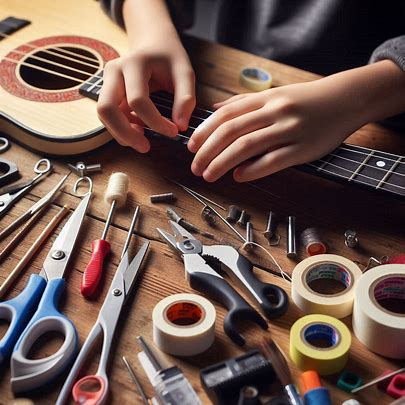Music and STEM: A Harmonious Blend for Young Learners
 Children naturally gravitate toward rhythm and sound. Tapping their feet to a beat or humming a tune comes as easily as breathing. Combining this instinct with STEM education—science, technology, engineering, and math—creates a powerful learning tool. Music makes abstract concepts tangible. It sparks creativity while grounding complex ideas in something familiar. This blend transforms classrooms into vibrant spaces where kids explore, experiment, and connect.
Children naturally gravitate toward rhythm and sound. Tapping their feet to a beat or humming a tune comes as easily as breathing. Combining this instinct with STEM education—science, technology, engineering, and math—creates a powerful learning tool. Music makes abstract concepts tangible. It sparks creativity while grounding complex ideas in something familiar. This blend transforms classrooms into vibrant spaces where kids explore, experiment, and connect.
Why does music work so well with science STEM for young children? It’s simple. Music engages emotions and logic at the same time. When kids clap to a rhythm, they unknowingly practice patterns—a key math skill. Singing about the water cycle embeds scientific processes in their minds. These activities aren’t just fun. They build bridges between creativity and analysis. For example, a song about planets can teach orbits and distances while letting kids express themselves through melody.
The Science of Sound
Sound itself is a gateway to scientific discovery. Vibrations create music, and understanding this opens doors to physics. Kids can explore how a guitar string’s length changes pitch. Or they might bang on pots to see how different materials affect tone. These hands-on experiments make science feel alive. Suddenly, terms like frequency and wavelength aren’t just words—they’re part of a song. This approach keeps curiosity front and center.
Math in Every Beat
Music is math in disguise. Counting beats in a measure teaches fractions. Dividing rhythms into halves or quarters mirrors division. Even tempo introduces timing and sequencing. Imagine a classroom where kids create their own drum patterns. They’re not just playing—they’re solving problems. They decide how many beats fit in a bar. They adjust timing to match a melody. These choices sharpen critical thinking, all while kids think they’re just having fun.
Engineering Through Instruments
Building instruments takes music-STEM integration to another level. Picture kids crafting a straw flute or a cardboard guitar. They’re not only designing but also testing materials and structures. Why does one straw make a higher pitch than another? How does tightening a string change the sound? These questions lead to trial and error—an engineer’s bread and butter. Kids learn resilience as they tweak their creations. Success feels sweeter when it’s hard-earned.
Moreover, these projects encourage teamwork. One child cuts materials, another tests sounds, and someone else records results. Collaboration mirrors real-world STEM careers. It’s thrilling to watch kids realize their ideas can shape something real. Their confidence grows with every note they play on an instrument they built themselves.
Technology Meets Creativity
Technology adds another layer to this mix. Apps and software let kids compose digital music. They experiment with loops, beats, and effects, learning coding basics along the way. Programs like Scratch or GarageBand turn music into a tech playground. Kids drag and drop sounds, creating songs while grasping algorithms. It’s a sneaky way to introduce computational thinking. Who knew coding could feel like jamming?
Better yet, technology makes music accessible. Not every school has a music room, but most have computers or tablets. Digital tools level the playing field, letting every child explore sound and science. This inclusivity matters—it ensures no one’s left out of the fun.
Why It Matters
Music doesn’t just make STEM more engaging. It builds skills that last a lifetime. Creativity fuels innovation—think of inventors humming as they sketch new ideas. Problem-solving through music teaches kids to think outside the box. Plus, it’s joyful. A classroom filled with song feels less like work and more like discovery.
Consider this: a child who struggles with equations might shine when counting beats. Another who finds science dull might perk up when experimenting with sound waves. Music meets kids where they are. It turns learning into something personal, something meaningful.
So, what’s the takeaway? Music and STEM aren’t opposites—they’re partners. Together, they create a space where kids can question, create, and grow. Classrooms become stages for curiosity. And when kids see how science, math, and music connect, they start to see the world differently. That’s a harmony worth celebrating.